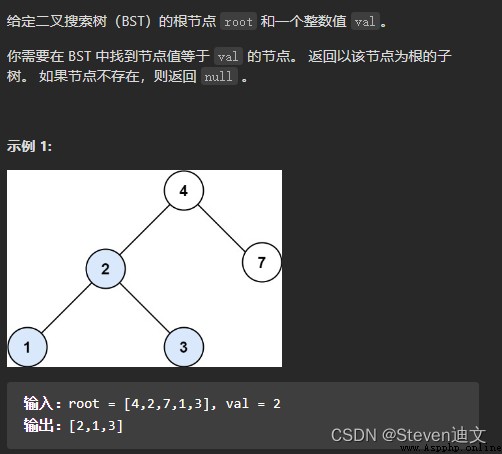Summarize the problems related to binary search tree , The solution is the related operation of binary search tree .
Their thinking :
Verify whether a tree is a binary search tree (BST)?
Write code according to the nature of binary search tree , Note as follows .
# Definition for a binary tree node.
# class TreeNode:
# def __init__(self, val=0, left=None, right=None):
# self.val = val
# self.left = left
# self.right = right
class Solution:
def isValidBST(self, root: Optional[TreeNode]) -> bool:
return self.check(root)
def check(self, root, min_val = float('-inf'), max_val = float('inf')) -> bool:
# The default is True
if not root:
return True
# Once the current node is smaller than the minimum , Or greater than the maximum , It's not a binary search tree
if root.val <= min_val or root.val >= max_val:
return False
# Check the left subtree and right subtree respectively
return self.check(root.left, min_val, root.val) and self.check(root.right, root.val, max_val)

Their thinking :
utilize BST Characteristics of , To search .
If the current node is less than the target value, go to the right subtree to find .
If the current node is larger than the target value, go to the left subtree to find .
# Definition for a binary tree node.
# class TreeNode:
# def __init__(self, val=0, left=None, right=None):
# self.val = val
# self.left = left
# self.right = right
class Solution:
def searchBST(self, root: TreeNode, val: int) -> TreeNode:
if not root:
return None
# Using the properties of binary search tree , lookup val
if val < root.val:
return self.searchBST(root.left, val)
if val > root.val:
return self.searchBST(root.right, val)
return root
Their thinking :
On the basis of binary search tree search , Modify the relevant code variation insert .
# Definition for a binary tree node.
# class TreeNode:
# def __init__(self, val=0, left=None, right=None):
# self.val = val
# self.left = left
# self.right = right
class Solution:
def insertIntoBST(self, root: TreeNode, val: int) -> TreeNode:
# Find an empty location to insert a new node
if not root:
return TreeNode(val)
# Receive the return value of recursive call
if val < root.val:
root.left = self.insertIntoBST(root.left, val)
if val > root.val:
root.right = self.insertIntoBST(root.right, val)
return root
Their thinking :
BST The deletion of is more complicated than the previous three questions .
There are mainly three cases of deleted nodes in the tree .
# Definition for a binary tree node.
# class TreeNode:
# def __init__(self, val=0, left=None, right=None):
# self.val = val
# self.left = left
# self.right = right
class Solution:
def deleteNode(self, root: Optional[TreeNode], key: int) -> Optional[TreeNode]:
if not root:
return None
if root.val > key:
root.left = self.deleteNode(root.left, key)
elif root.val < key:
root.right = self.deleteNode(root.right, key)
# Found node value is key
else:
# Deal with the situation 1, 2
if not root.left:
return root.right
if not root.right:
return root.left
# Deal with the situation 3, Here, the smallest of the right subtrees is used to replace
minNode = self.getMin(root.right)
# Delete the smallest node in the right subtree
root.right = self.deleteNode(root.right, minNode.val)
# Replacement node
minNode.left, minNode.right = root.left, root.right
root = minNode
return root
def getMin(self, root):
# according to BST The nature of , The one on the far left is the smallest
while root.left:
root = root.left
return root